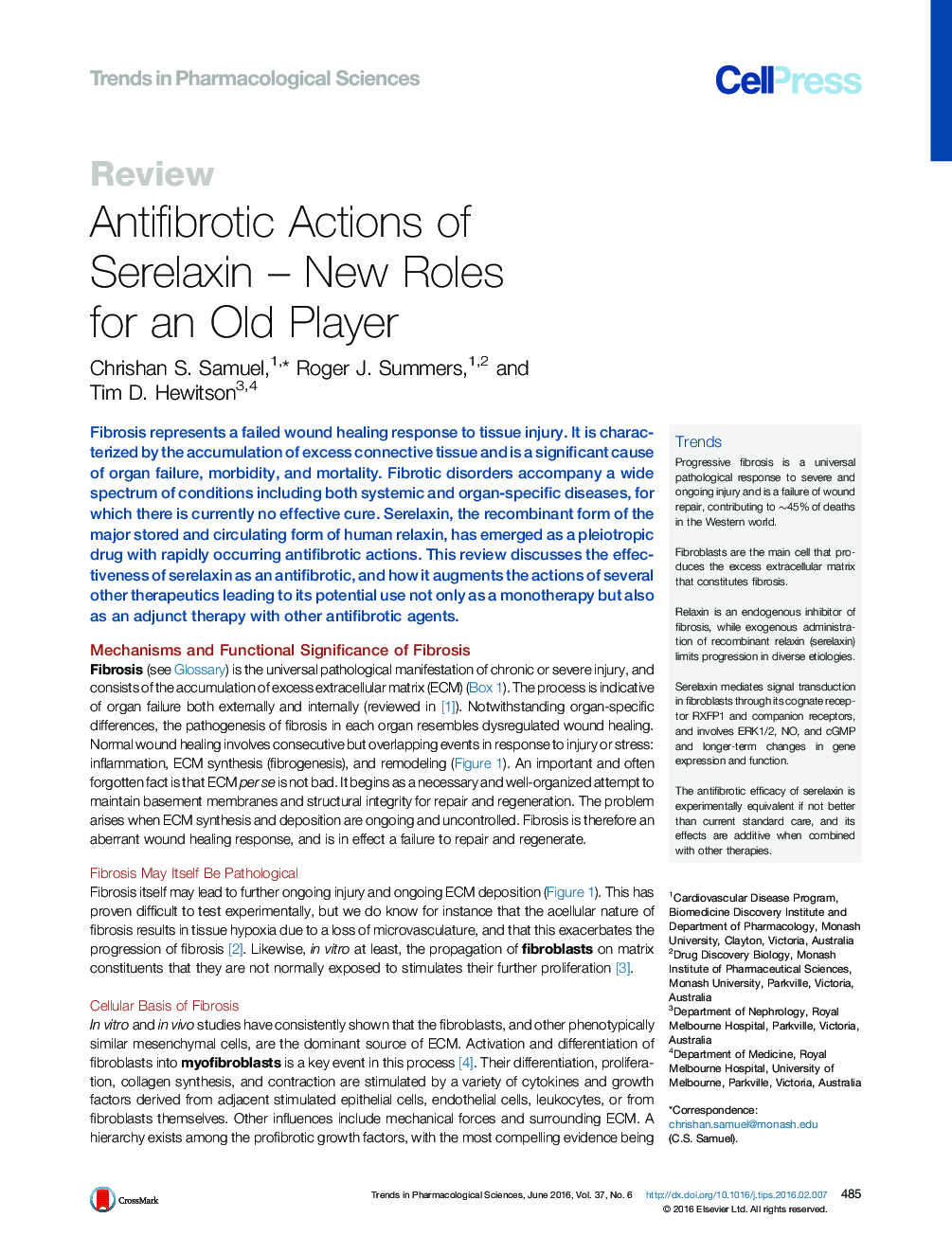| کد مقاله | کد نشریه | سال انتشار | مقاله انگلیسی | نسخه تمام متن |
|---|---|---|---|---|
| 2572449 | 1129297 | 2016 | 13 صفحه PDF | دانلود رایگان |

Fibrosis represents a failed wound healing response to tissue injury. It is characterized by the accumulation of excess connective tissue and is a significant cause of organ failure, morbidity, and mortality. Fibrotic disorders accompany a wide spectrum of conditions including both systemic and organ-specific diseases, for which there is currently no effective cure. Serelaxin, the recombinant form of the major stored and circulating form of human relaxin, has emerged as a pleiotropic drug with rapidly occurring antifibrotic actions. This review discusses the effectiveness of serelaxin as an antifibrotic, and how it augments the actions of several other therapeutics leading to its potential use not only as a monotherapy but also as an adjunct therapy with other antifibrotic agents.
TrendsProgressive fibrosis is a universal pathological response to severe and ongoing injury and is a failure of wound repair, contributing to ∼45% of deaths in the Western world.Fibroblasts are the main cell that produces the excess extracellular matrix that constitutes fibrosis.Relaxin is an endogenous inhibitor of fibrosis, while exogenous administration of recombinant relaxin (serelaxin) limits progression in diverse etiologies.Serelaxin mediates signal transduction in fibroblasts through its cognate receptor RXFP1 and companion receptors, and involves ERK1/2, NO, and cGMP and longer-term changes in gene expression and function.The antifibrotic efficacy of serelaxin is experimentally equivalent if not better than current standard care, and its effects are additive when combined with other therapies.
Journal: - Volume 37, Issue 6, June 2016, Pages 485–497